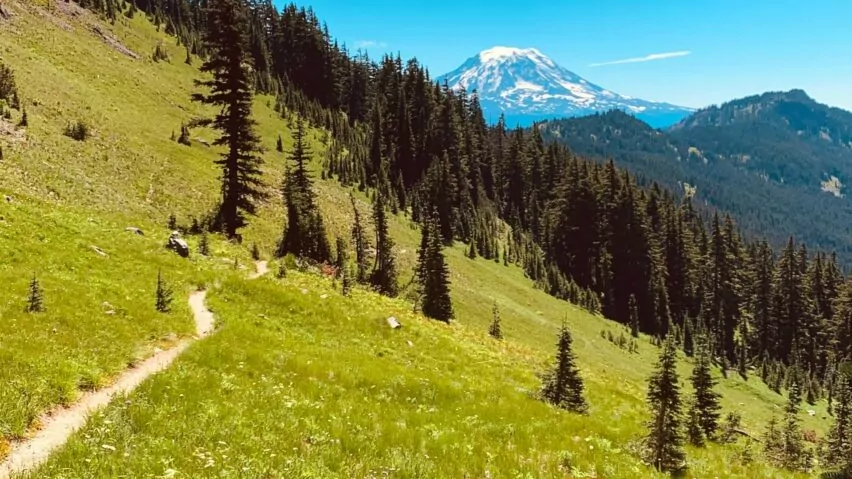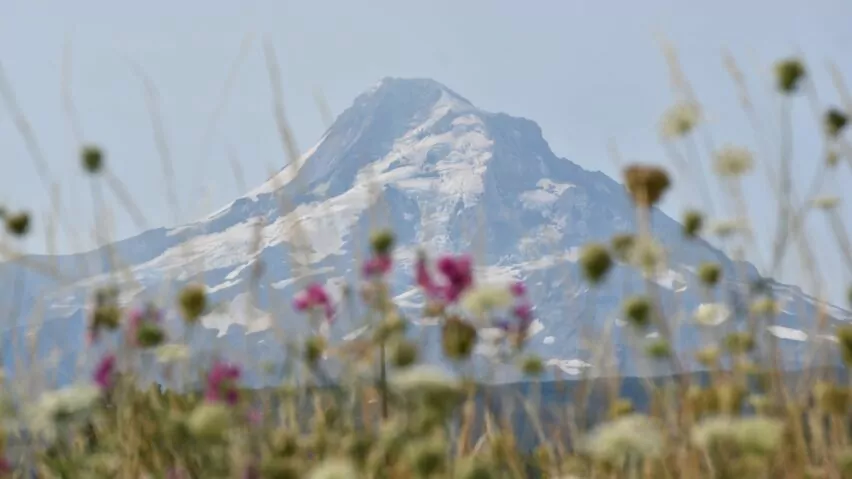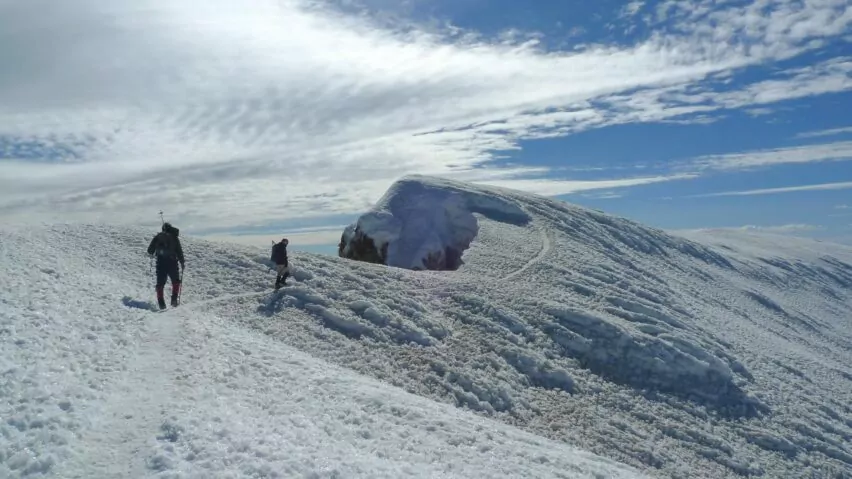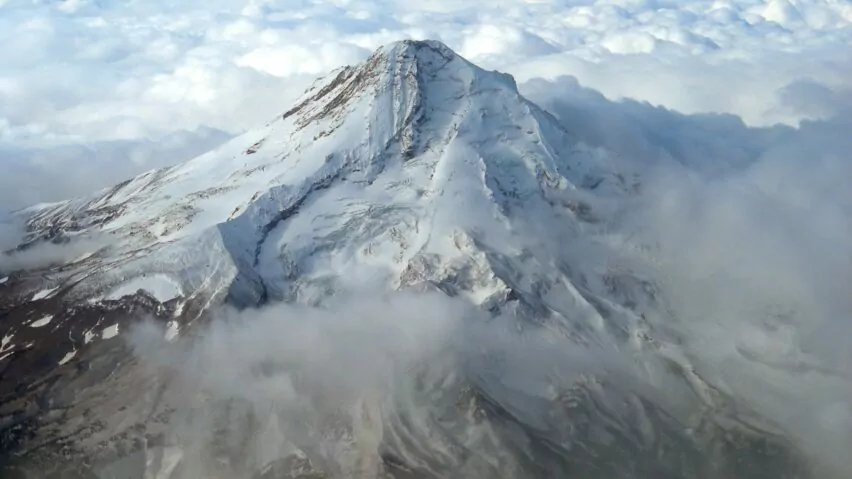Mt. Hood Hiking

As one of the crown jewels of Oregon wilderness, Mt. Hood stands tall as a beacon of natural beauty and adventure. Hiking this majestic peak is an experience unlike any other, offering a plethora of unique features that set it apart from other destinations. From its awe-inspiring trails to its rich history and breathtaking vistas, Mt. Hood promises an unforgettable journey for those who feel the pull of the mountains.
Hiking
Mt. Hood boasts an extensive network of hiking trails that cater to all skill levels, making it accessible to both seasoned hikers and beginners. Whether you seek a leisurely stroll through lush forests or a challenging ascent to the summit, Mt. Hood has it all. The trails are well-maintained, offering a blend of natural beauty and tranquility that will leave you in awe. Here I have highlighted some of the best trails that surround Mt. Hood.
Timberline Trail
The Timberline Trail is a challenging 41-mile loop that encircles Mt. Hood, offering hikers a chance to experience the mountain’s impressive 11,239 feet from every angle. This trail takes you through lush forests, alpine meadows, and across glacial rivers. Be prepared for steep ascents and descents, with your reward being panoramic vistas of the peak and surrounding wilderness.
Mirror Lake Trail
For a shorter but equally rewarding hike, the Mirror Lake Trail is a must-visit. This 3.7-mile round trip trail takes you through old-growth forests and leads to the stunning Mirror Lake. The lake’s calm waters perfectly reflect the mountain, creating a postcard-worthy scene. It’s an ideal spot for a picnic, swim, or serene moment of reflection.
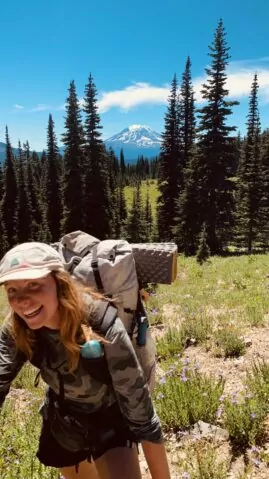 Paradise Park Loop
Paradise Park Loop
The Paradise Park Loop is a 12-mile trail showcasing the diverse beauty of Mt. Hood’s alpine meadows. As you hike through wildflower-filled fields and rocky ridges, you’ll be treated to breathtaking views of the mountain, glaciers, and surrounding valleys. This trail is best enjoyed during the summer months when the wildflowers are in bloom.
Ramona Falls Trail
The Ramona Falls Trail is a moderate 7-mile loop through lush forest to the stunning Ramona Falls. This cascading waterfall is a sight to behold, with its delicate streams of water flowing over a wall of moss-covered basalt rocks. The trail offers a peaceful and refreshing experience, perfect for nature enthusiasts and photographers.
Zigzag Canyon Trail
For a more challenging and adventurous hike, the Zigzag Canyon Trail is an excellent choice. This 9-mile out-and-back trail takes you through dense forests, across rocky terrain, and past breathtaking views of the Zigzag Canyon. Be prepared for steep sections and rugged conditions. Your reward is an unforgettable experience and stunning vistas.
The Pacific Crest Trail
One of the crown jewels near Mt. Hood is the Pacific Crest Trail (PCT). This iconic long-distance trail stretches over 2,650 miles from Mexico to Canada, with a portion passing through the vicinity of Mt. Hood. Embarking on a section of the PCT near Mt. Hood allows hikers to immerse themselves in the grandeur of the Cascade Range, with breathtaking vistas of snow-capped peaks and alpine meadows all around.
History
Mt. Hood is steeped in a rich history that adds depth to its allure. The area has been home to indigenous tribes for thousands of years, and their cultural heritage can still be felt today. Exploring the region offers a chance to learn about the traditions and stories of the Native American tribes who have long revered this sacred mountain. Additionally, Mt. Hood has played a significant role in the development of mountaineering in the United States, with notable expeditions and achievements etched into its history.
Indigenous History
Mt. Hood has a rich history of indigenous tribes that have inhabited the area for thousands of years. These tribes have a deep connection to the land and have left a lasting impact on the region.
Wasco-Wishram: The Wasco and Wishram tribes are closely related and traditionally lived along the Columbia River. They have a strong presence in the Mount Hood area and are known for their fishing and trading skills. The Wasco-Wishram people have a rich cultural heritage and continue to maintain their traditions and customs.
Confederated Tribes of Warm Springs: The Confederated Tribes of Warm Springs is a federally recognized tribe consisting of the Warm Springs, Wasco, and Paiute tribes. They have ancestral ties to the Mount Hood region and have lived in the area for generations. The Warm Springs people have a deep spiritual connection to the land and consider Mount Hood a sacred place.
Chinook: The Chinook people have a long history in the Pacific Northwest, including the Mount Hood area. They were skilled fishermen and traders, known for their canoes and trade networks. The Chinook people have a rich cultural heritage and their descendants continue to carry on their traditions.
Molalla: The Molalla people were native to the Willamette Valley and had a presence in the Mount Hood area. They were skilled hunters and gatherers, relying on the abundant natural resources of the region. The Molalla people faced significant challenges due to colonization and displacement but continue to maintain their cultural identity.
It is important to note that this is just a brief overview of the indigenous tribes associated with Mount Hood. Each tribe has its own unique history, traditions, and contributions to the region. It is crucial to respect and honor the indigenous peoples’ ongoing connection to the land and their cultural heritage.
Mountaineering History
Mount Hood, standing tall in the state of Oregon, has a captivating mountaineering history that has attracted adventurers and climbers from around the world. With its challenging terrain and stunning beauty, Mount Hood has become a renowned destination for mountaineering enthusiasts.
Early Expeditions: The first recorded ascent of Mount Hood took place in 1857 by a group of explorers led by Henry Pittock. This marked the beginning of Mount Hood’s mountaineering legacy. Over the years, various expeditions were undertaken, with climbers navigating treacherous glaciers and steep slopes to reach the summit.
Mazamas and the Crag Rats: In 1894, the Mazamas, a mountaineering organization, was founded in Portland, Oregon. They played a crucial role in promoting mountaineering on Mount Hood and organizing expeditions. Another notable group, the Crag Rats, formed in 1926 and are the oldest mountain rescue organization still operating in the United States. They have been instrumental in saving many lives on Mt. Hood.
Tragic Incidents: Mount Hood’s challenging conditions have unfortunately led to several tragic accidents. One of the most notable occurred in 1986 when a sudden storm struck a group of climbers, resulting in the loss of several lives. This event highlighted the importance of preparedness, safety measures, and the need for experienced guides on the mountain.
Training Ground for Climbers: Mount Hood’s accessibility and diverse terrain have made it a popular training ground for aspiring mountaineers. Many climbers use Mount Hood as a stepping stone to more challenging peaks, honing their skills in navigation, glacier travel, and ice climbing on its slopes.
Iconic Routes: Mount Hood offers a variety of routes for climbers of different skill levels. The South Side Route, also known as the “Hogsback,” is the most popular and frequently climbed route. Other notable routes include the Pearly Gates, Leuthold Couloir, and Sunshine Route, each presenting its own set of challenges and rewards.
Mount Hood’s Volcanic Nature: Mount Hood is a dormant stratovolcano, adding to its allure for mountaineers. The volcanic nature of the mountain provides unique geological features and stunning vistas, making the climbing experience even more captivating.
Mount Hood’s mountaineering history is a testament to the human spirit of exploration and adventure. It has witnessed triumphs, tragedies, and remarkable feats of endurance. As climbers continue to be drawn to its slopes, it is essential to approach Mount Hood with respect, preparedness, and a deep appreciation for the mountain’s natural beauty and inherent risks.
Special Sites Nearby
Beyond hiking trails and the mountain itself, the Mt. Hood area offers a plethora of other captivating sites worth further exploration. The Columbia River Gorge, a short distance away, offers a dramatic landscape of towering cliffs, cascading waterfalls, and lush greenery. The historic Timberline Lodge, perched at an elevation of 6,000 feet, is a must-visit architectural gem that offering a portal to the past as well providing visitors with modern amenities.
Hiking Mt. Hood is an experience that transcends the ordinary. Its breath taking views, rich history, connection to the Pacific Crest Trail, and nearby attractions make it a destination that stands out among the rest. Whether you seek adventure, serenity, or a deeper connection with nature, Mt. Hood will leave an indelible mark. Embark on this extraordinary journey and discover the unparalleled majesty of Mt. Hood.



